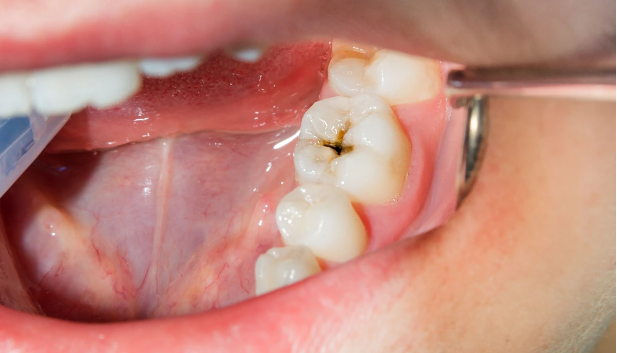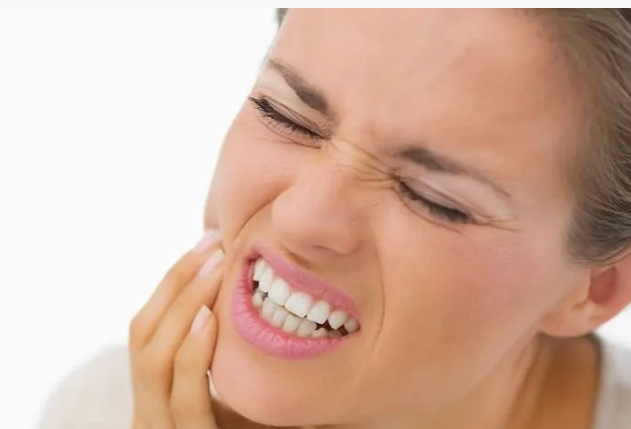Contents
How To Spot Cavities – To keep your teeth healthy and limit cavities, it is necessary to prevent the decaying of your teeth. But to do that, you must first understand what causes cavities and tooth decay.

Teeth form the most integral part of our lives. It also has an impact on our appearance and our confidence as well. It has been said that a nice and healthy set of teeth make you look confident and more attractive.
Let’s be honest! Who doesn’t want a set of perfect-looking teeth? However, some dental problems may affect your teeth and prevent you from getting that perfect smile.
What does the teeth anatomy consist of?
A tooth is the hardest part of the human body. It is made from calcium and other substances consisting of several layers forming different teeth parts. Let’s take a quick look at the anatomy of teeth and see what it consists of:
-
The outermost part of the teeth is known as the tooth enamel. This layer of the teeth is made from calcium and does the job of protecting the inner layers.
-
The second layer of the teeth is known as the dentin. This hard tissue layer contains tubes that are responsible for communicating with the nerves and sending signals if the food is hot or cold. When the enamel gets damaged, food and other substances come in direct contact with these tubes and cause high sensitivity that causes pain.
-
The pulp is the inner structure that consists of blood vessels and nerves.
-
Below the pulp is a layer of soft connective tissue called cementum that binds the roots to the gums and jawbone firmly.
-
And the end of the teeth consists of a layer called the Periodontal ligament. This tissue also supports and holds the teeth together.
Thus, to have a healthy set of teeth, you must take utmost care of them and provide them with the care and nutrition they need.
What are the different factors that affect teeth health?
Individual habits play an important role in determining how healthy their teeth are. Several individuals have habits that eventually cause a toll on the health of their teeth. Some of these teeth-health-altering habits have been listed below.
-
Biting the nails
Several individuals have the habit of biting nails for long periods. This long habitual biting ritual can put pressure on the jaw. Thus this habit can lead to chipping of the teeth as well as jaw dysfunction.
-
Harsh brushing habit
This habit causes damage to the teeth’ enamel as well as the gums. It can damage the pH of the enamel and give way to bacteria to cause cavities.
-
Grinding and Clenching
Many individuals grind their teeth over others due to stress or other conditions. This causes pain in the teeth, chipping, or even cracking of the teeth. It also causes muscle tenderness and other problems.
-
Constantly Eating Food
This habit strains the environment in the mouth and speeds up the process of plaque formation on the teeth.
-
Chewing on ice
Many individuals habituate chewing on ice for comfort or any other reason. But, little do they know that this dangerous habit can break teeth or damage the outermost layer of the teeth.
-
Using the mouth as a tool
Many individuals use their teeth to open bottles, cans, and food bags that actual tools can also open. This can cause issues like chipping, breaking or cracking in the teeth. It can also cause jaw dysfunction and affect your ability to chew.
These are some basic problems that can be avoided by using relaxing techniques, being more careful, using guards for the teeth, and several other techniques that help protect the teeth. However, these external factors can damage your teeth and are easily curable and controllable.
What are cavities, and how are they caused?
Cavities are the small holes you see on the surface of the teeth. These cavities are formed due to plaque in the mouth. Plaque is formed when the sugary and starchy food we eat.
This plaque attacks the outermost layer of the teeth called the enamel, which protects the layers underneath. However, the action of the plaque and bacteria destroy these protective layers and create holes in the teeth that progress over time and cause the affected teeth to look stained or dark in color.
As a result of the damaged outer layer, the second layer is exposed directly to anything that enters the mouth. Thus, the affected teeth become more sensitive and cause sharp pain when they come in contact with hot or cold substances.
This decay is called cavity and leads to several problems if not treated in time. Unlike the individual habits that cause damage to the teeth, cavities are very common and happen to 1 in every 4 adults between 20-60.

What are the risk factors that cause Cavities?
Several factors increase the risk of cavities, which are listed below.
-
Food and drinking habits.
This plays an important role because frequent consumption of sugary and starchy items increases the risk of developing cavities. These foods stick to the teeth for a long time, increasing the activities of bacteria and plaque that feed on them.
-
Inadequate Selfcare.
Lack of oral health maintenance that as brushing the teeth from time to time, and other factors affect the quality of your teeth and cause decay and cavities.
-
Location of the teeth.
This is an important factor because most of the teeth that get affected by plaque are the teeth in the back that are difficult to reach and clean. These teeth tend to have more pits and grooves that trap more food than the teeth in the front. Thus, it is difficult to be cleaned and easily affected by plaque.
-
Age.
Older people have problems like receding gums and teeth that are wearing out. Thus age is another risk factor of cavities affecting individuals.
These are just a few factors that increase the risk of cavities. There are several other factors, and treating them as soon as you spot the symptoms is necessary.
Coming to the most important question: How to spot cavities?
Here is a list of some of the most common symptoms that can help you understand if you have any cavities:
-
You may feel a sharp pain in the teeth when they’re exposed to hot, cold, or sugary foods.
-
If the cavity is significant, you may be able to see a dark spot on the affected teeth.
-
The teeth start to look darker and stained.
-
A visible hole or a pit on the tooth.
-
Persistent toothache.
-
Increased sensitivity or swelling, and
-
Pain when you chew.
Individuals might not always be able to see the cavities depending on whether the cavity is just forming or if it is located in the back of your teeth, that is, in the interiors. This list will help you spot the symptoms of cavities easily and help you to get the necessary treatment as soon as you detect their presence.
Thus, individuals should maintain their oral health effectively and prevent these from occurring. Maintaining your teeth will save you from the expensive treatment costs as well as save you from the pain and suffering it comes along with.
